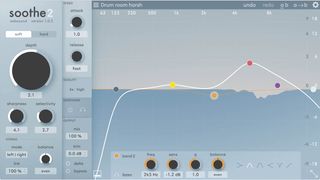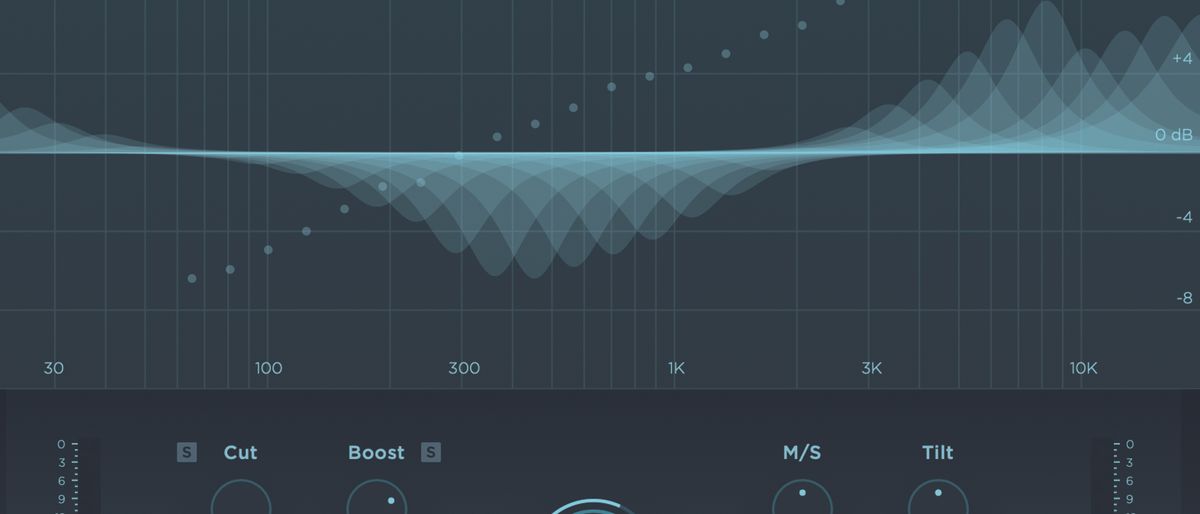MusicRadar Verdict
A surprisingly capable and very easy to use EQ that you can go as deep with as you wish, but seemingly always delivers a better sound. What more could you want?
Pros
- +
Sounds great on most sounds.
- +
Very easy to use.
- +
You can dig in deep if you wish.
- +
Can be used creatively, too.
Cons
- -
You’ll need to use it subtly, especially for total mix processing.
MusicRadar's got your back
Wavesfactory Equalizer: What is it?
macOS: 10.13 or higher. Intel and M1 natively supported. 64-bit DAW and OS.
Windows: 7, 8 or 10. 64-bit DAW and OS.
Buy at Plugin Boutique
Everything is ‘smart’ these days when it comes to music production. AI is doing more of its thing and we’re doing less of ‘our’ thing, but as dystopian as that sounds, when it comes to certain time-consuming mixing tasks, AI is welcome to them. Dynamic EQ processing is a case in point and there are plenty of ‘intelligent’ tools that are ready to continuously tweak EQ parameters as they go.
Wavesfactory’s Equalizer – ‘we’ll get straight to the point with the name,’ they must have thought – aims to go one better. Or should we say, one faster. This EQ analyses your audio, shows you the adjustments it’s making, and you increase or decrease the processing with one knob, That’s not quite all it does, of course, but that’s the central philosophy, and it’s a great one.
Wavesfactory Equalizer: Performance and verdict
Equalizer has 32 bands of processing, and it essentially analyses your audio in each band and boosts or attenuates the frequency at that point according to its smart thinking. What it is doing, then, is effectively taking your audio back to its source sound or, if you like, making it sound more natural. As Wavesfactory says, it “takes from where there is too much and adds where there is need. Put simply, it’s an Equalizer”. Fair enough. So if you have a muddy bass synth, for example, it will likely reduce lower frequencies up to around 500Hz, while often boosting the highs, effectively bringing everything back to zero – almost like it’s adding a calming influence on everything.

• Oeksound Soothe2
More of a problem-solver than natural EQ, but still operates in an intelligent, dynamic way.
• Soundtheory Gullfoss
Similar automatic EQ that magically works, and named after a waterfall in Iceland, so it must be good.
And we’re not just talking about individual tracks, as Equalizer will work on entire mixes too, so you can use it as possibly the simplest mastering tool ever. Whatever audio you apply it to, you get a lovely dynamic graphic showing you what processing is being done to each band in real time, with very obvious boosts shown above the central line and cuts shown below – it’s that straightforward. A central dial lets you push theses boosts and cuts, and at first we wondered why on Earth you’d want to do this, when Equalizer had already decided what was good. As it turns out, leaving the knob on the default 50% setting is usually ideal, but pushing it makes Equaliser a more creative effect.
There are more options to dig into if you don’t want to leave everything up to the AI bots, the main one being the ability to draw your own curves (we cover the rest of the controls below). Here, you can mouse-in and correct any boosts or cuts you are not happy with. We found this especially useful for reducing bass frequencies that Equalizer might have introduced, just to reduce the overall mud a single sound might contribute to in the overall mix. It’s a bit like having the ability to take over your self-driving car, so welcome and easy to do.
We applied Equalizer to several sounds and it was more dramatic with those basses, but still added presence to leads and beats. We did find – as is always the case with EQ – that removing other processing on the track helps, but it genuinely does improve sounds with ease, either dramatically, or subtly.
What else does Equalizer offer?
As easy as Equalizer is to use on a very basic level, and on top of the ability to draw in your own curves, there are several other controls on offer to help dig into your EQing. Cut and Boost simply determine the levels of each of those, but the more interesting options here are the Solo buttons for each. These let you hear the delta – the difference between input and output – so you can see and hear exactly what Equalizer is doing, a great feature that gives an insight into the Equalizer processing philosophy.
Elsewhere, we have Attack and Release which determine how quickly Equalizer’s processing comes in and out, and pushed to extremes these can make the plugin quite creative. On the right hand side there’s a Tilt control that will have Equalizer process more of the highs for a brighter sound, or lows for a darker one. Finally, M/S delivers Mid-Side processing so you can apply Equalizer to the sides or mid part of your sound stage. By default (50%) it is stereo.
A little help from an EQ?
We’ve seen plenty of intelligent plugins, and some do a great job but still require some intelligence from the user (a tall order, sometimes!). Wavesfactory Equalizer differs in that you can use it on any level you like. Let it do all the heavy lifting, or get involved and use it as your assistant.
For certain time-consuming mixing tasks, AI is welcome to them…
We were quite surprised at just how good it made overall mixes sound – used at sensible and subtle processing levels, that is. It made us feel like qualified mastering engineers just by dialing it in, albeit feeling slightly guilty that we hadn’t spent years studying on a Tonmeister course for the knowledge. For £85, this is one of the best ways to enjoy a little auto-intelligence, and as long as you don’t mind leaving your imposter syndrome at the door, is a great way to improve your sound with minimum effort required.
MusicRadar verdict: A surprisingly capable and very easy to use EQ that you can go as deep with as you wish, but seemingly always delivers a better sound. What more could you want?
Wavesfactory Equalizer: Hands-on demos
Wavesfactory
White Noise Studio
Folia Soundstudio
palebluedot studios
Wavesfactory Equalizer: Specifications
- macOS 10.13 or higher. Intel and M1 natively supported. 64-bit DAW and OS.
- Windows 7, 8 or 10. 64-bit DAW and OS.
- CONTACT: Wavesfactory
Andy has been writing about music production and technology for 30 years having started out on Music Technology magazine back in 1992. He has edited the magazines Future Music, Keyboard Review, MusicTech and Computer Music, which he helped launch back in 1998. He owns way too many synthesizers.

“Imagine not knowing Eric Johnson, Vai and Satriani and seeing this for the first time? It literally blows your mind”: Matteo Mancuso – 10 albums that changed my life

Play like Jimmy Page! Exclusive video lesson

Transform your voice in just 12 months - score a year’s worth of vocal lessons for just $99 with 30 Day Singer
Most Popular











